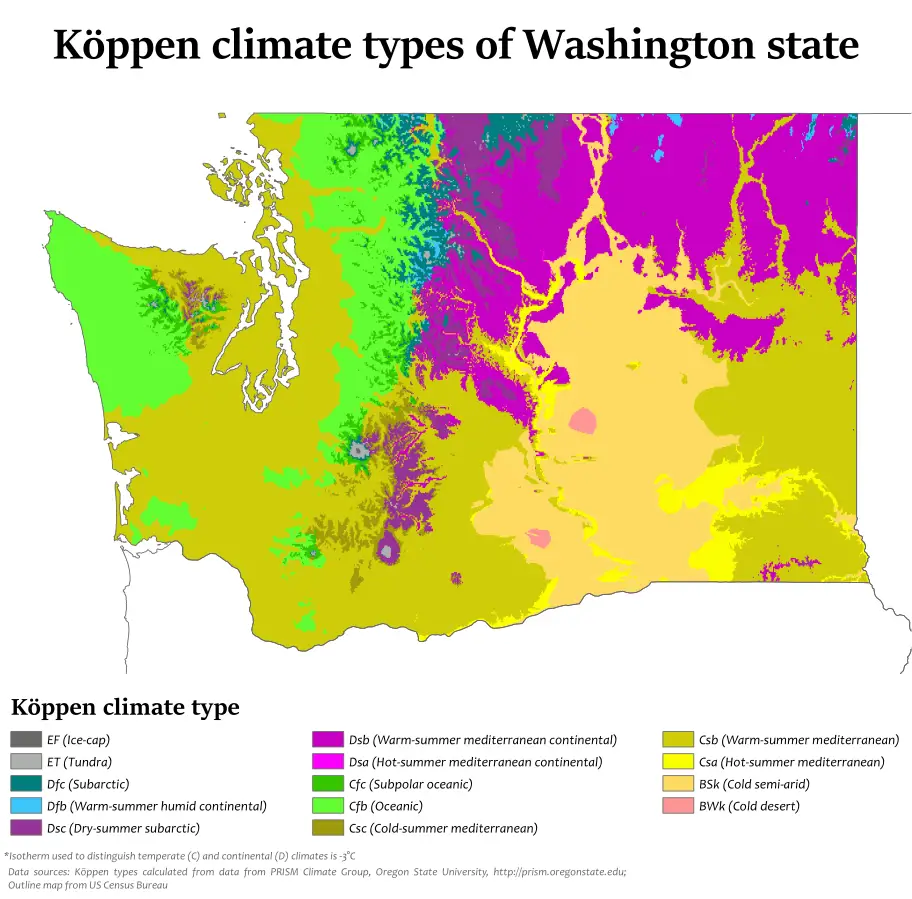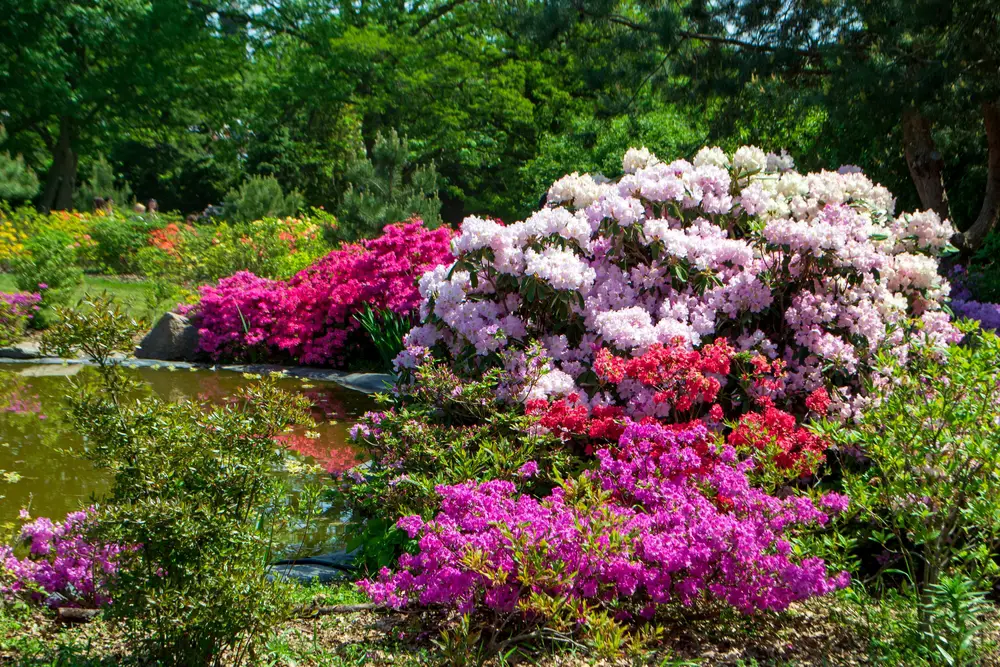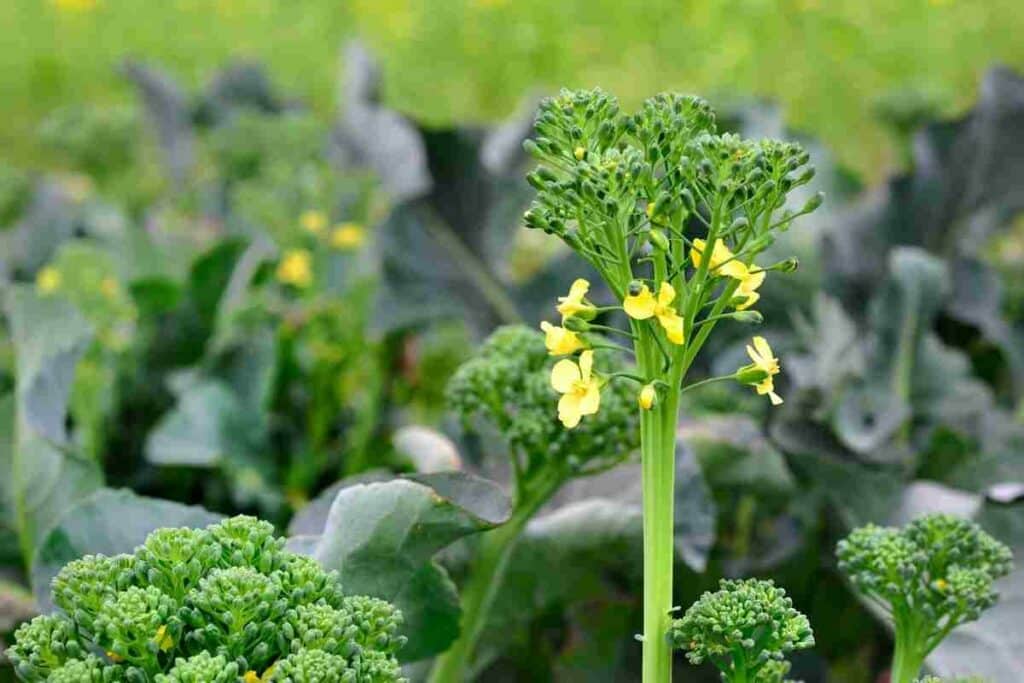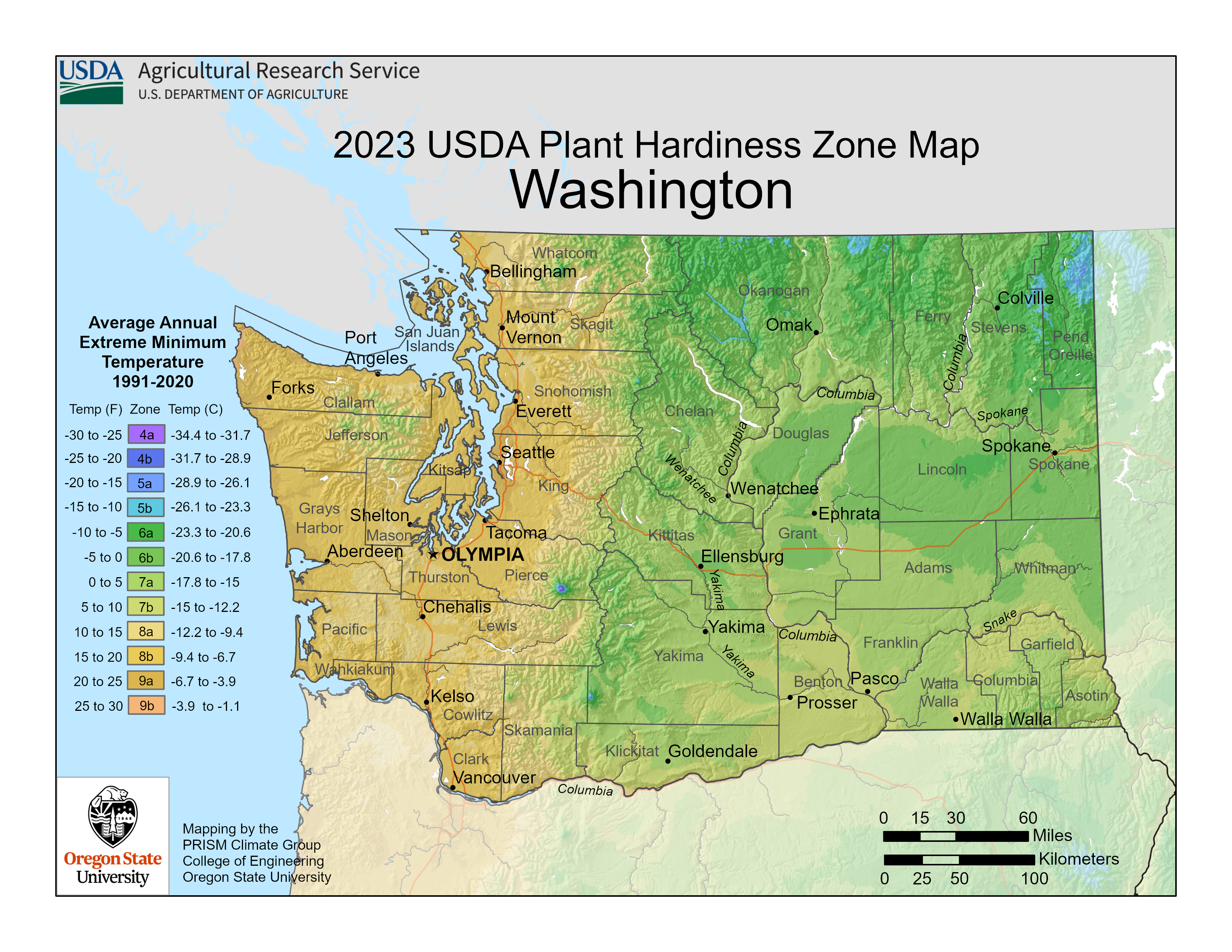Washington Plant Hardiness Zones
| USDA Hardiness Zone | Average Minimum Extreme Winter Temperature Range Fahrenheit (°F) Celsius (°C) | Average Last Frost Date Range In Spring (Beginning Of The Growing Season) | Average First Frost Date Range In Autumn (End Of The Growing Season) |
|---|---|---|---|
| 4a | -30°F to -25°F -34.4°C to -31.7°C | Early to late June | Early to late September |
| 4b | -25°F to -20°F -31.7°C to -28.9°C | Early to mid-June | Early to late September |
| 5a | -20°F to -15°F -28.9°C to -26.1°C | Late May to mid-June | Late September to early October |
| 5b | -15°F to -10°F -26.1°C to -23.3°C | Late May to mid-June | Late September to early October |
| 6a | -10°F to -5°F -23.3°C to -20.6°C | Early to mid-May | Mid-to-late October |
| 6b | -5°F to 0°F -20.6°C to -17.8°C | Late April | Mid-to-late October |
| 7a | 0°F to 5°F -17.8°C to -15°C | Late April | Mid-to-late October |
| 7b | 5°F to 10°F -15°C to -12.2°C | Early to mid-April | Late October |
| 8a | 10°F to 15°F -12.2°C to -9.4°C | Late March to early April | Late October to early November |
| 8b | 15°F to 20°F -9.4°C to -6.7°C | Mid-March to mid-April | Late October to mid-November |
| 9a | 20°F to 25°F -6.7°C to -3.9°C | Mid-March to mid-April | Early to mid-November |
| 9b | 25°F to 30°F -3.9°C to -1.1°C | Mid-March to late April | Mid-November |
Washington Growing Conditions
General Climate

Washington has many different climates but is primarily a warm summer Mediterranean. The Pacific Ocean and the Olympic Mountains primarily moderate Washington’s climate.
The Cascade Mountains divide the state into two regions. One is the maritime climate of Western Washington. The other, which is east of the Cascades, is the plain-like hills of the central region and the arid eastern part of the state.
In the coastal and maritime areas, summers are warm, and winters are cool. Precipitation levels are typically higher than the eastern and central portions of Washington, and temperatures are more moderate year-round.
Much of central Washington is a warm continental climate. This means summers are often hot, winters are particularly cold, and precipitation is spread evenly throughout all four seasons.
Much of eastern Washington has a hot summer Mediterranean climate. Summers are typically dry and hot, winters are cold, and the majority of their precipitation occurs in the winter and spring.
Microclimates
USDA plant hardiness zones are an important starting point for your garden, but you’ll also need to consider microclimates.
Microclimates are areas where specific conditions create a climate different from the climate they’re situated in.
Buildings, fences, paved areas, or short hills and valleys can create these microclimates.
They can be as small as a space in your backyard or as large as a city.
In other words, learn about your local conditions from local experts to see if your garden falls into a microclimate.
Extreme Weather
Though Washington does receive some extreme weather, it is infrequent. This is due to the oceanside Olympic Mountains (which extend to the Coastal Mountains in Canada) mitigating storms as they move inland.
The Cascade Mountain Range also protects Eastern Washington. They block most of the severe weather coming from the west.
However, Washington still experiences extreme weather, such as atmospheric rivers, wind storms, and heat domes.
Atmospheric Rivers
Atmospheric rivers are long and narrow pressure systems that carry water vapor through the atmosphere from the Tropics toward, in this case, the western coast of North America.
When atmospheric rivers release vapor over land, they typically form rain or snow, sometimes for days on end.
This can result in flooding and mud/landslides.
Once flooding has eased off, remove any broken or decayed vegetation. Plants can take a few days to recover from any kind of stress, so continue to check your garden and be sure to remove plants that aren’t recovering as needed.
Once you have finished cleaning up after the storm, assess the drainage in your garden beds. Ideally, water will be able to move easily through your property.
Other solutions to manage excessive water in your garden include gardening in raised beds or containers.
Wind Storms
Though the Pacific Ocean typically moderates weather systems, windstorms of appreciable strength routinely make landfall in Western Washington. Winds of 60-70 mph (even higher on the coast) make landfall each year.
This affects the power grid, civic, and personal property and is often devastating to vegetation, including trees.
Check in on your garden as soon as you can after a storm and prune away any damaged plant material.
Install physical supports such as stakes, cages, and trellises to protect plants from wind damage.
A longer-term option is to incorporate windbreaks into your garden design. This includes planting trees, shrubs, and hedges (sturdy and robust plants) to block the most severe winds. Doing so also provides shelter to the more delicate plants closer to your garden’s center.
Heat Domes
A heat dome is a persistent high-pressure ridge in the atmosphere. It causes air to sink and compress, which causes even more heat and prevents clouds from forming. The air becomes stagnant, resulting in widespread, significant heat for days at a time.
Though periods of extended heat are not unprecedented throughout Washington, the instances are increasing.
Extreme heat can stress your plants. To help them survive, give them lots of water. Sometimes, this means watering them twice daily (morning and night).
Another option is to spread a layer of organic mulch, such as straw or grass clippings, over the roots. This helps the soil underneath retain water and protects roots from being burned.
Gently drape shade cloth over the top of plants during the heat event, ensuring its weight is held by stakes or some structure other than the plants themselves.
Growing Season
Washington’s growing season runs from about mid-March/late April to early to late September. Use this information as a starting point and remain aware of current weather conditions. There is considerable variability when each season may begin from year to year.
Washington Gardening Tips

Choose The Right Plants
Much of Washington exhibits moderate temperatures, which suits a wide range of plants. However, prolonged heat can be rare outside of gardening in the state’s warmest areas. This can make growing true heat-loving plants such as tomatoes, peppers, and squash difficult.
Seeking early maturing cultivars and starting seeds indoors can make all the difference. Plant your seedlings out only when temperatures are above 50°F (10°C) in the evening.
Manage Your Water
For wetter areas of Washington, include effective drainage in your garden design.
This can involve adjusting your land grade. Growing in containers or raised beds allows water to move through your property without damaging your plants.
Consider incorporating a rain garden to capture excess water or maximize a low spot in your yard. This will use excess water and simultaneously showcase water-loving plants.
If you’re in the arid growing regions in Washington, you will need to take special care to maximize your water resources.
Growing drought-tolerant plants is helpful. So is improving soil structure through the addition of organic materials such as compost, straw, grass clippings, or wood chips in the form of mulch. Improving soil quality improves groundwater infiltration as well as water-carrying capacity. Mulching also acts as a physical barrier to retain water from surface evaporation.
Prevent Pests And Disease (For Wet Areas)
Given the generous precipitation levels in several parts of Washington, you’ll need to pay special attention to preventing disease and pests brought on by damp environments.
Some methods for this are the following:
- Choose plant varieties bred for disease resistance. Seed packets and plant tags should indicate this, but asking at your local plant nurseries is also helpful.
- Mulch to prevent splash up from soil and transmission of soil-borne fungal pathogens.
- Use tin cans to stop cutworms and slugs from feeding on and destroying the roots of transplants. Do this by planting them in the soil around the roots of plants when planting out.
- Use floating row cover over transplanted plants to keep pests out as plants become established. Don’t forget to remove this covering when the plants are flowering, so pollinators can access them!
- Plan to ensure your plants will have enough space to grow to their full size and still have good airflow.
Consult With Local Professionals
Consulting with local gardening professionals allows you to benefit from their experience with your area’s conditions, the plants that do well there, and overall best practices.
Washington Plant Suggestions

Trees
- Western hemlock (Tsuga heterophylia)
- Sitka spruce (Picea sitchensis)
- Red Alder (Alnus rubra)
Shrubs
- Blue elderberry (Sambucus cerulea)
- Oregon wintergreen (Gaultheria shallon)
- Evergreen huckleberry (Vaccinium ovatum)
Flowers
- Red columbine (Aquilegia canadensis)
- Coast rhododendron (Rhododendron macrophyllum)
- Broadleaf lupine (Lupinus latifolius)
Vegetables
- Asparagus (Asparagus officinalis)
- Carrots (Daucus carota)
- Broccoli (Brassica oleracea)
Herbs
- Parsley (Petroselinum crispum)
- Mint (Mentha spicata)
- Horseradish (Amoracia rusticana)
Spices
- Garlic powder (Allium sativum)
- Onion powder (Allium cepa)
- Thyme (Thymus vulgaris)
Fruits
- Pacific huckleberry (Vaccinium parvifolium)
- Pears (Pyrus communis)
- Ranier cherries (Prunus avium ‘Ranier’)
Succulents
- Cooper’s ice plant (Delosperma cooperi)
- Dragon’s Blood Sedum (Sedum spurium)
- Prickly Pear Cactus (Opuntia basilaris)
Disclaimer
Any of the above can change and is not exhaustive.
Treat anything above like a good starter guide. Then use that as a foundation as you consult with local gardeners, professionals, forecasts, guides, and organizations.

